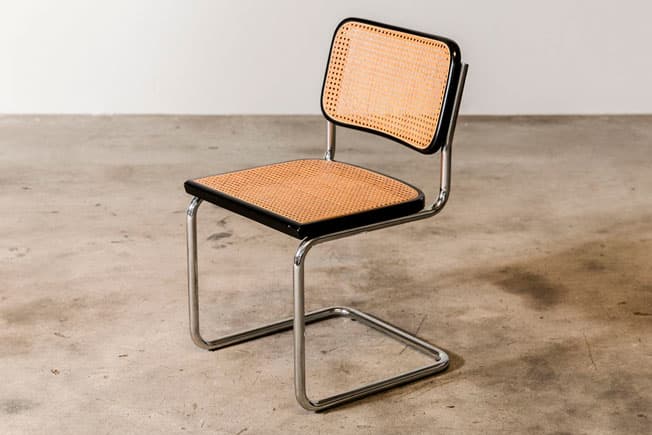Do you want to buy the best Marcel Breuer’s Cesca chair? Visit our catalog of designer furniture and buy the chair at the best price!
Marcel Lajos Breuer was born in May 1902 in Pecs, Hungary to a Jewish family. His journey into the world of design began with his studies at the School of Fine Arts in Vienna, where he received the foundations of his art.
Path to the Bauhaus and First Successes
In 1920, Breuer joined the Bauhaus, the school of applied arts, where he became part of the innovation movement under the guidance of Walter Gropius. In 1925, he created his first iconic object, the Basil Chair, inspired by the shape of a bicycle handlebar. This project established him as an influential designer and brought attention to metal tube furniture.
Architectural Successes and a Move to Switzerland
After completing his studies, Breuer did not limit himself to furniture design. In 1928, he established his architectural office in Berlin and realized several important projects, including the Gidion Siegfried House in Zurich and the Dolterthal complex in the same city. From 1932 to 1934 he worked in Switzerland, designing furniture for the firm Wӧhnbedarf.
Emigration and Work in the United States
In 1935, due to the growing threat of war, Breuer emigrated to England and began working with Jack Pritchard, creating another legendary piece of furniture, the plywood chaise lounge. However, in 1937, because of the war, he moved to the United States, where he worked with Gropius at the Harvard School of Architecture, strongly influencing the country’s residential architecture.
Later Years and Legacy
In 1946, Breuer established his studio in New York and continued to produce magnificent designs. The UNESCO building in Paris, St. John’s Abbey in Minnesota, the IBM Research Center in Paris, and the Whitney Museum building in New York all became his true masterpieces.
Marcel Breuer passed away in 1981, but his legacy lives on in the buildings, furniture and designers and architects he inspired. He left us not only an aesthetic appreciation of design, but also important innovations in the use of materials such as reinforced concrete. A great modernist and pioneer of industrial design, Marcel Breuer remains in history as one of the most influential and talented designers and architects of his time.
The perfect chair – B32
In 1928, the German and American architect, designer and visionary, Marcel Breuer, once again wowed the public with his splendor after the success of the Basil chair. This time he presented the world with another masterpiece – the Cesca chair, second name B32. The inspiration to create this piece came to him when he saw a stool lying on its side.
The main innovation was the use of curved chrome plated tubes instead of traditional legs. This gave the B32 Cesca stool the weightlessness and visual sense of floating in the air that became its recognizable feature.
In 1937, Marcel Breuer improved the design of the chair by adding armrests. This change gave even more comfort and aesthetics to the design. After this improvement, the Cesca B32 chair became an integral part of the interior, attracting attention with its elegance and modernity.
The concept conceived by Breuer quickly gained popularity and became the object of repeated copying and replication. His ideas became an inspiration for many designers, and since then the Cesca chair concept has been actively used in furniture design until today.
Breuer’s designs and concepts are relevant even decades later.
Do you want to buy a perfect Cesca chair? Visit our catalog of designer furniture and buy the chair and other furniture at the best price!

